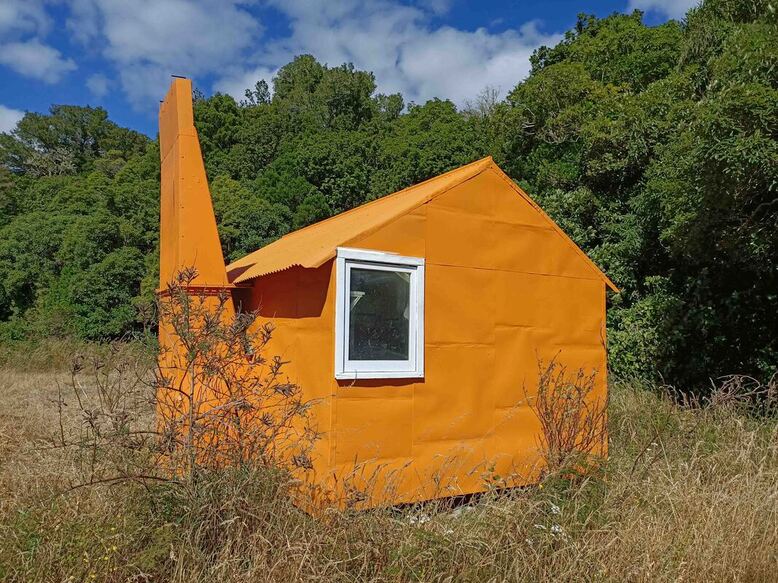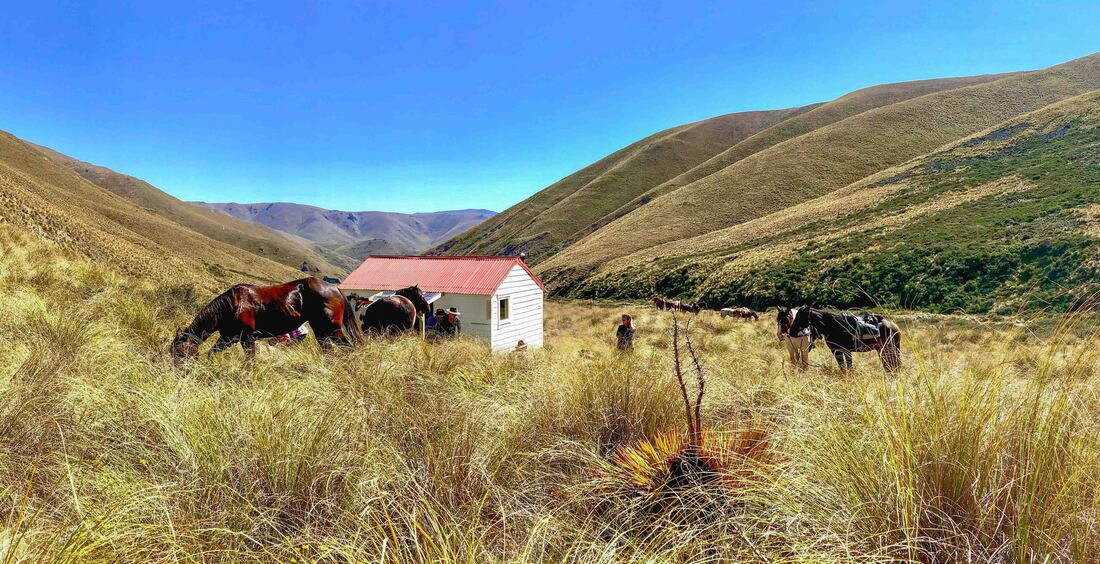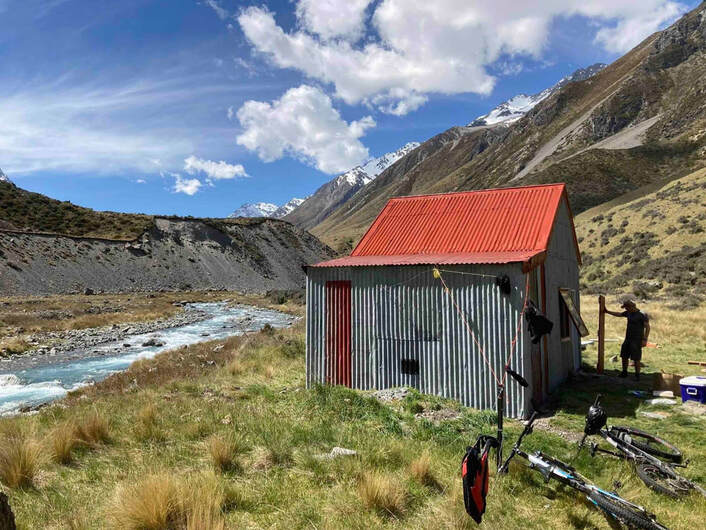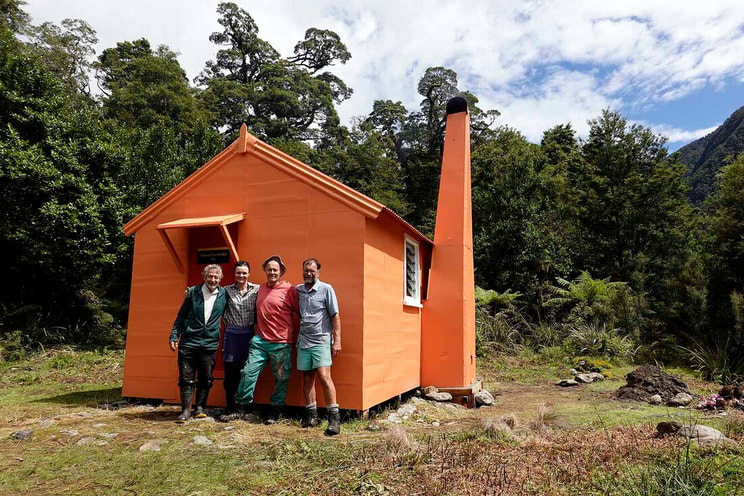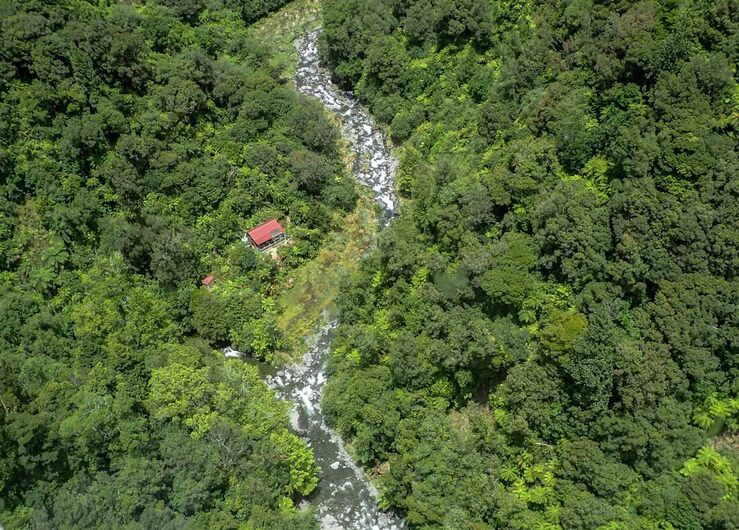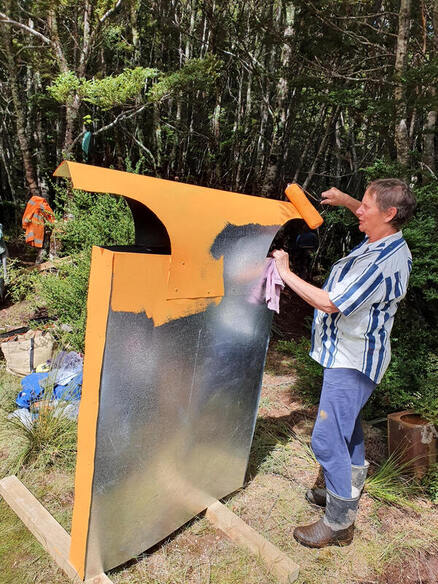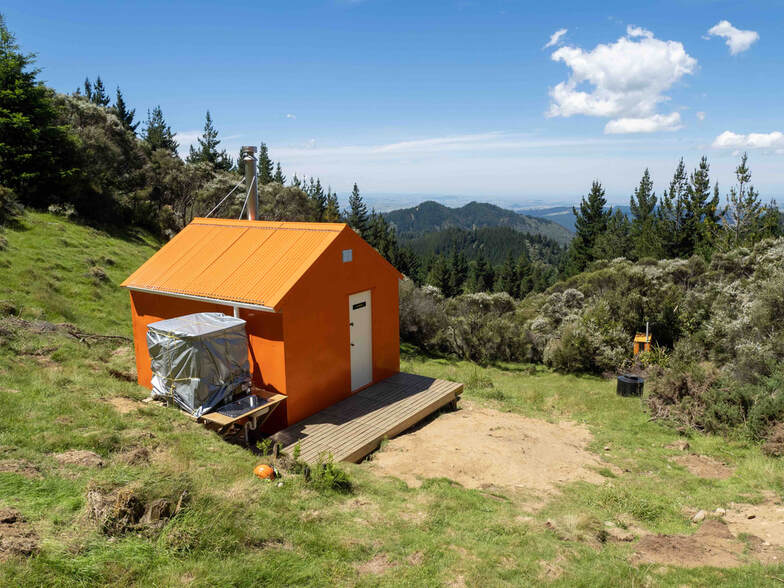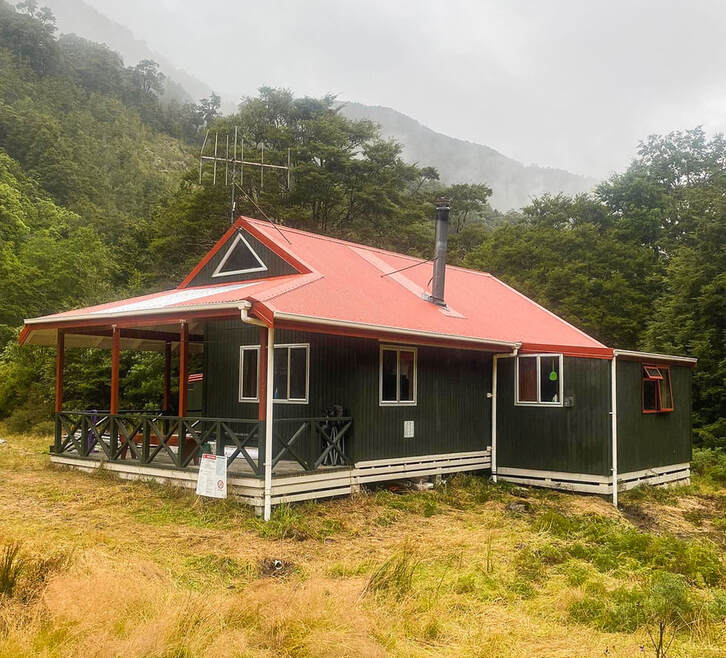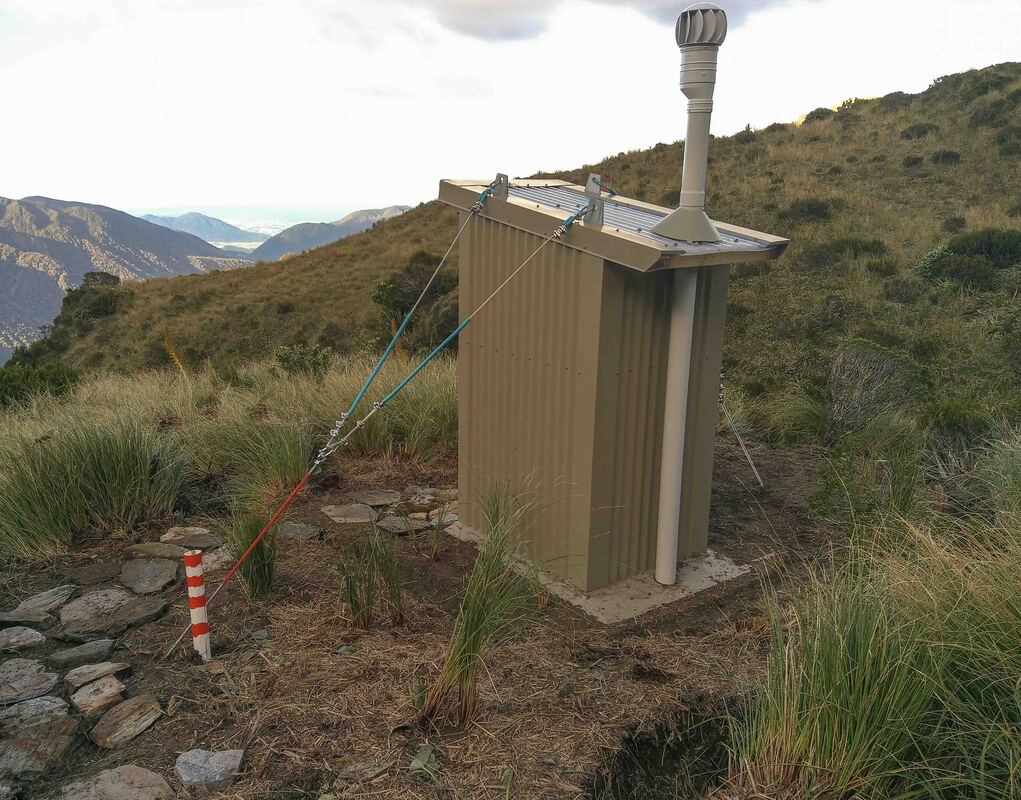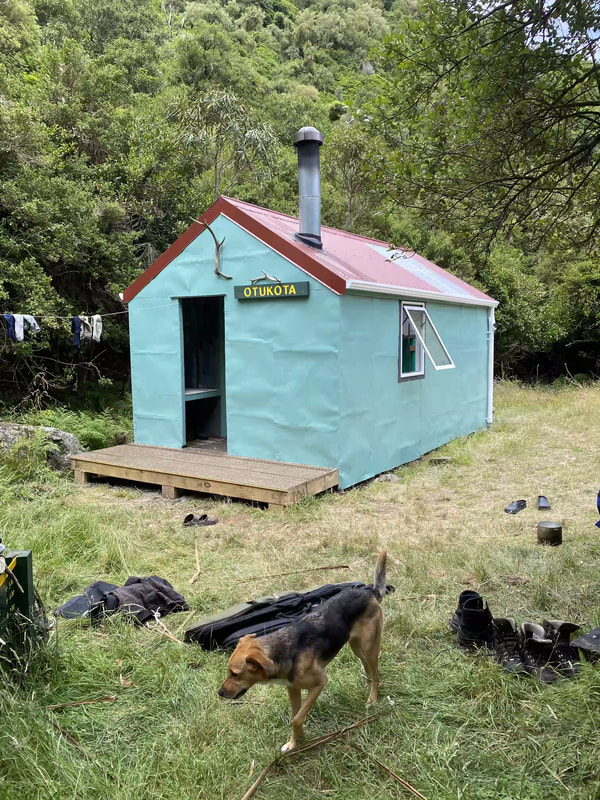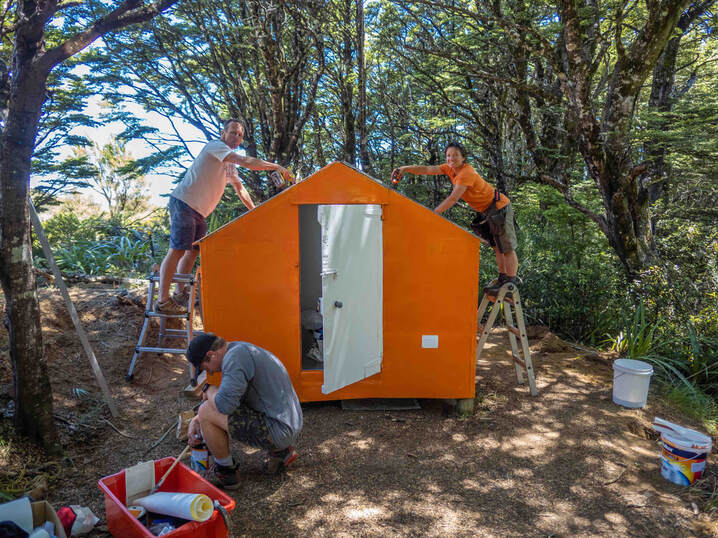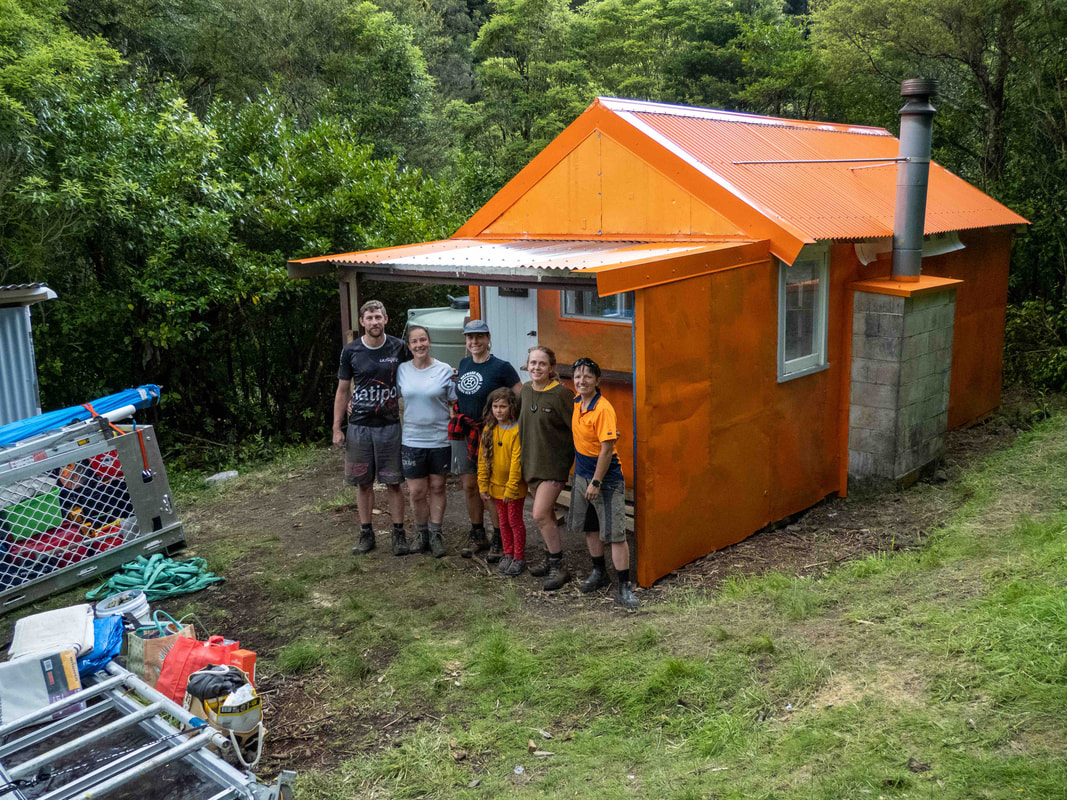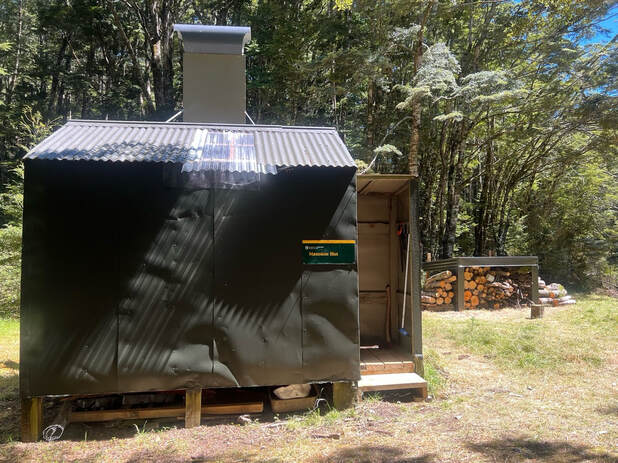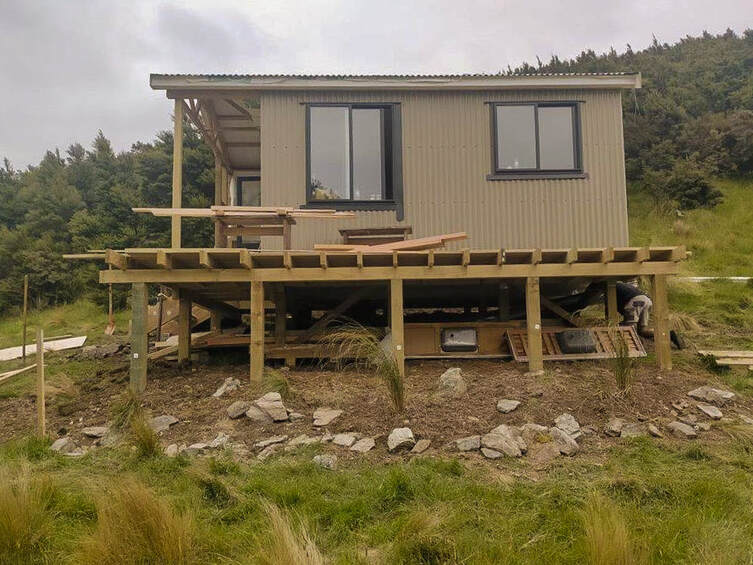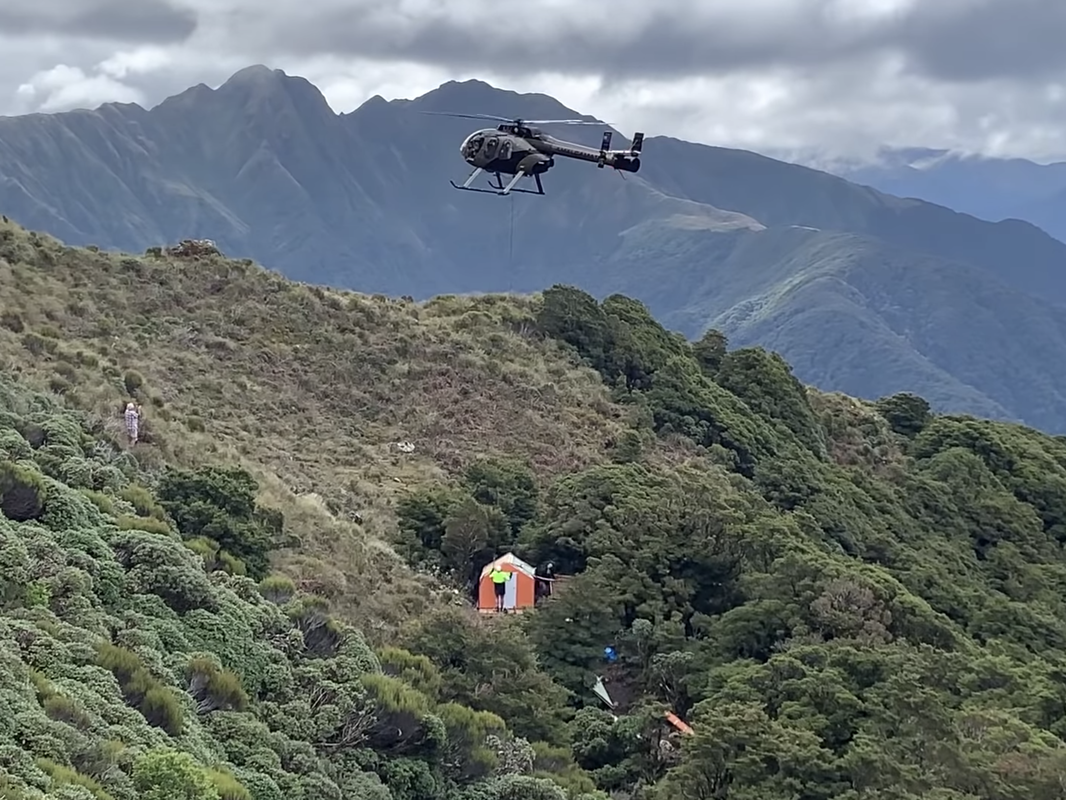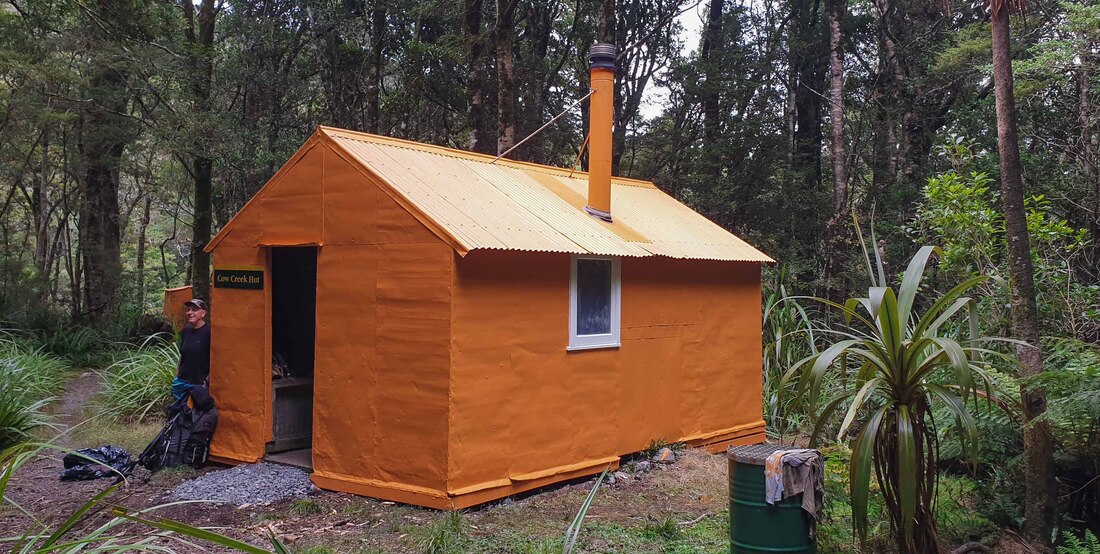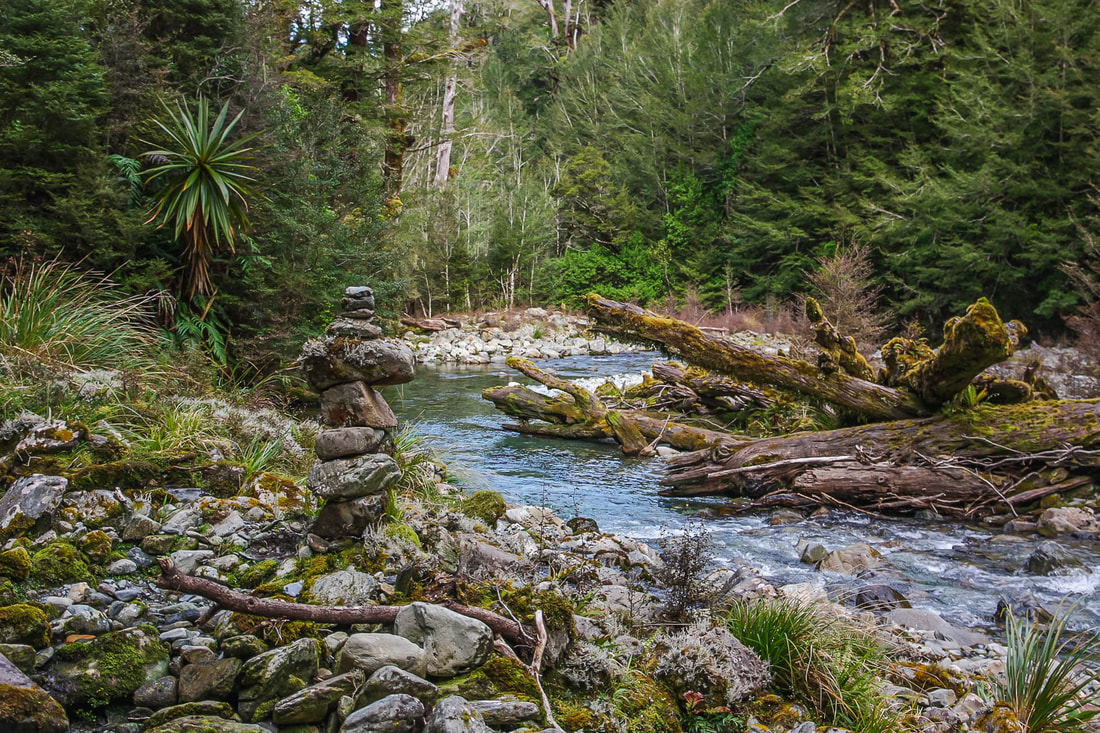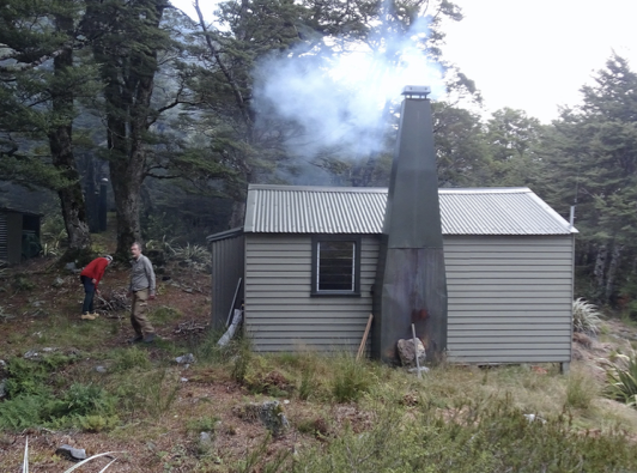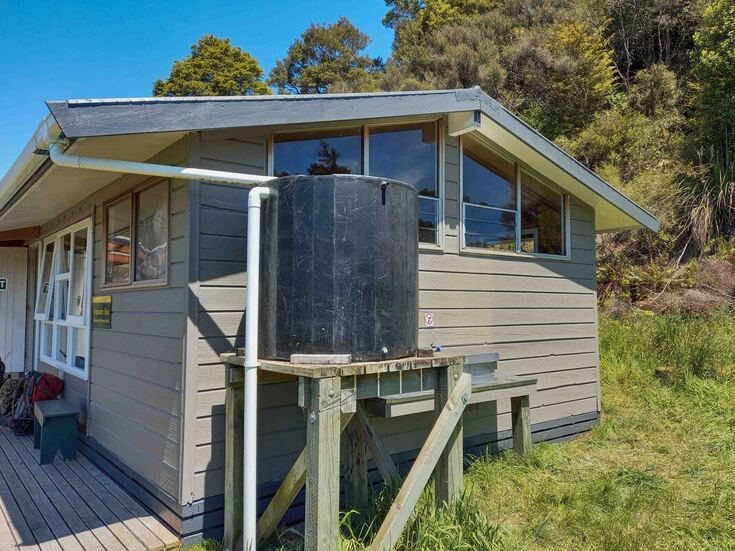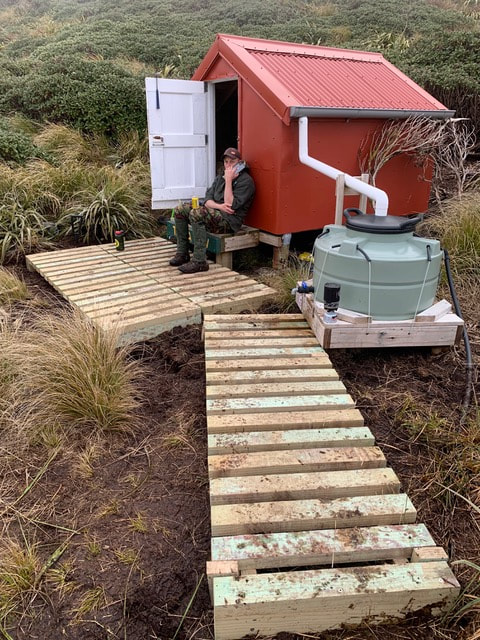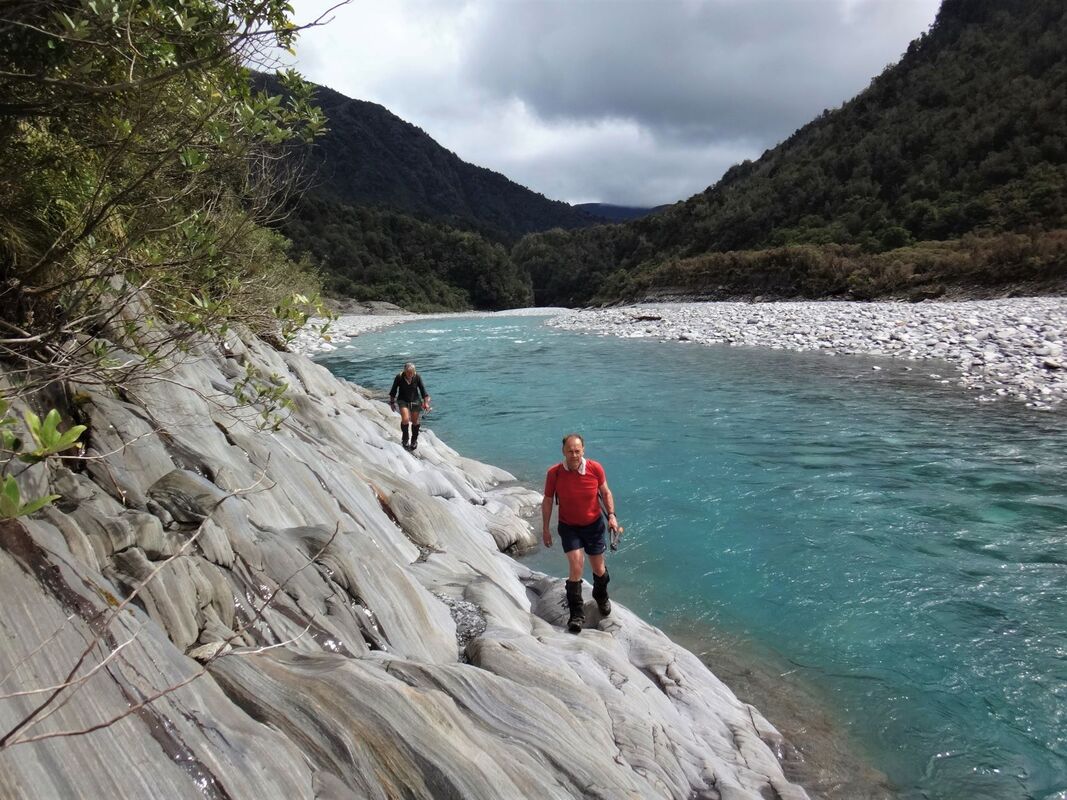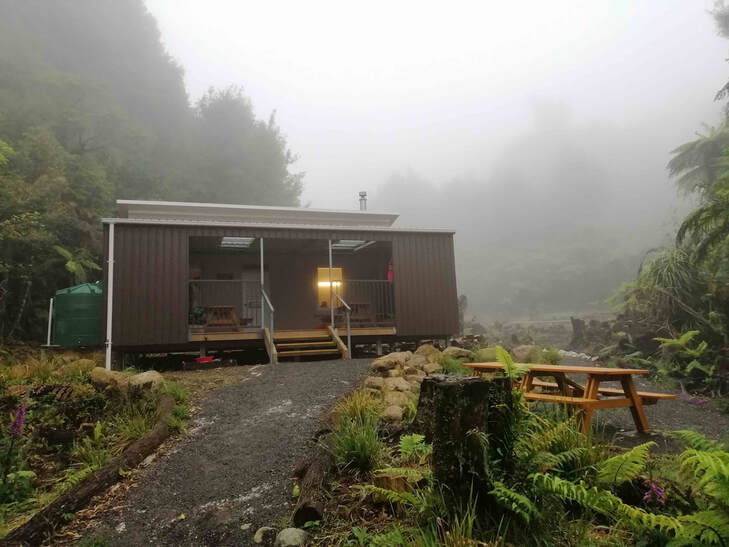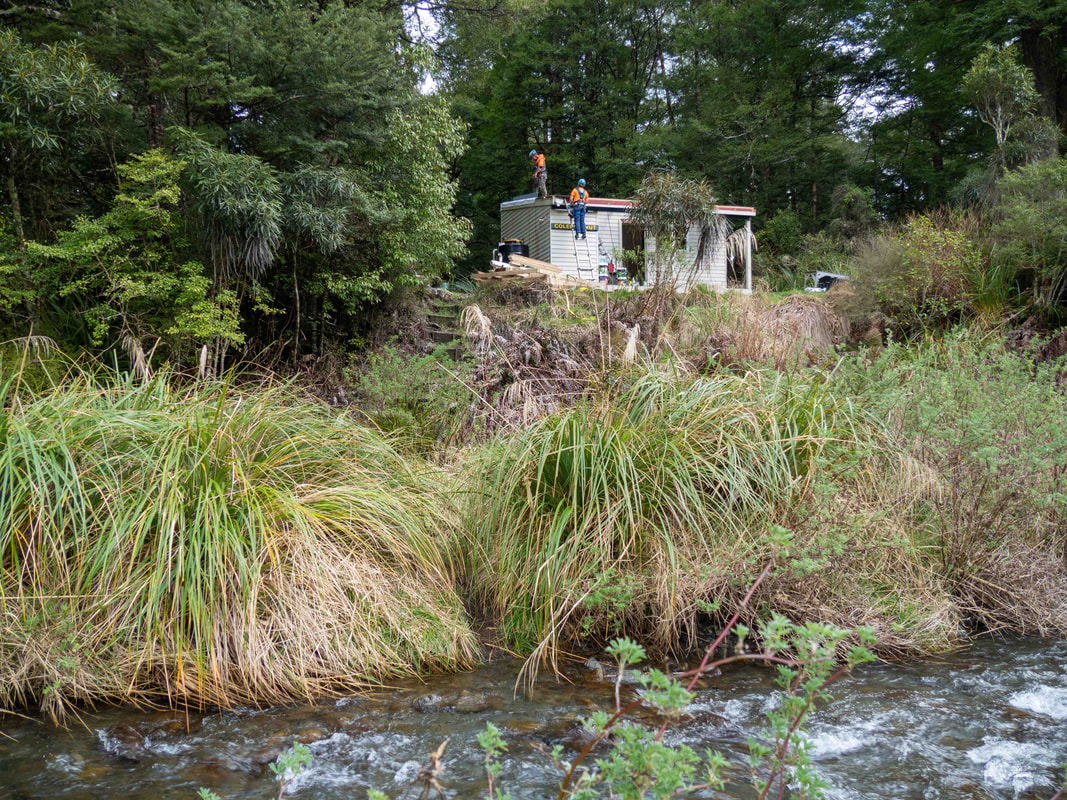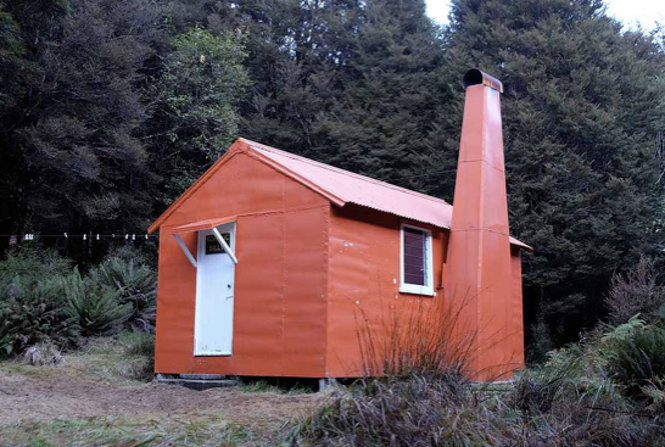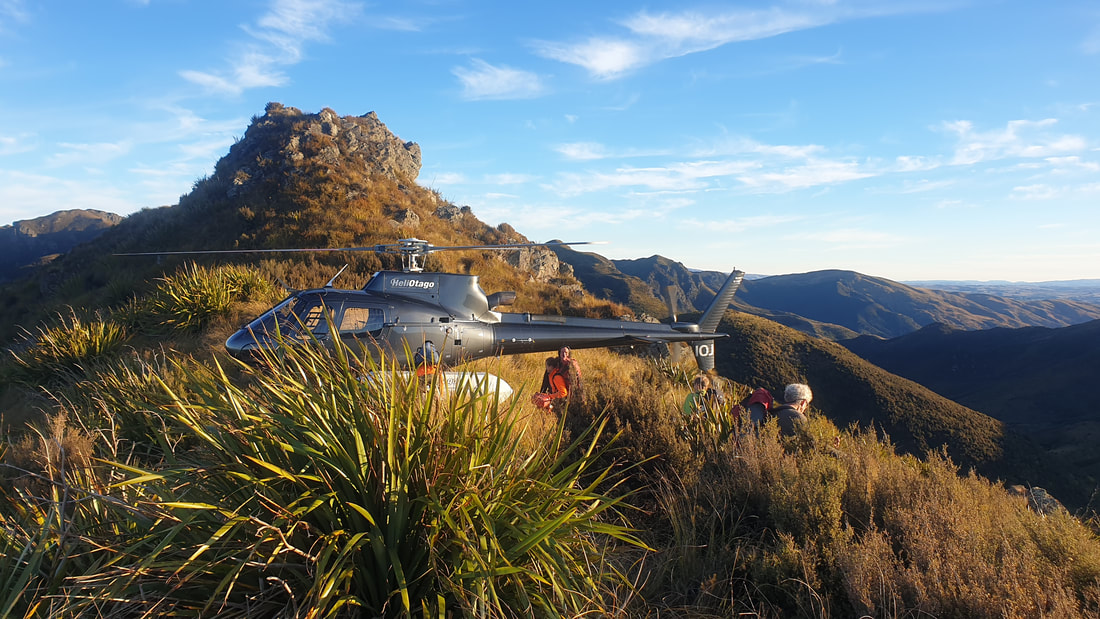|
Aorangi Forest Park, Wairarapa – January 2022 Tauanui is one of a handful of huts in the Wairarapa’s Aorangi Range. Located a couple of hours by foot or bike up the Tauanui River from the nearest road end, the 6-bunk hut gets fair amount of use and – unfortunately – abuse. Happily, a group of Backcountry Trust volunteers gave the hut some much-needed attention in January 2022.
Oteake Conservation Park, Canterbury – 15 January 2022 Otematapaio or Pink Hut is situated on the old Otematapaio Station near the head of the Otematapaio Creek on the boundary with Otematata Station and approximately 18 kilometres from the main Omarama to Otematata highway. Otematapaio Station was originally part of Omarama Station, which ran from the Ahuriri River to the Otematapaio River. Many websites name the hut as 'Otematapaio Station Hut', but to the local owners, musterers and fencers, it was always known as the ‘Pink Hut’. The old horse pen had been washed away and fallen into disrepair.
Jollie Valley, Mackenzie Country, Canterbury – November 2021 The Jollie River flows into the Tasman River east of Aoraki / Mt Cook National Park, taking its source from the high peaks spanning the Burnett Mountains and the Gamack Range. Last November, a team of New Zealand Alpine Club volunteers went in to do some work on two of the huts in the valley: Green Point Hut and Jollie Hut. The Backcountry Trust funded transport and materials.
South Westland – 12-19 December 2021 Backcountry Trust board member Geoff Spearpoint has had a long association with the Paringa Valley, and over the last seven years has completed several maintenance trips to Tunnel Creek Hut. It lies near the head of the Paringa River, beneath Mt Zeilian and the impressive Douglas Spur, and provides important shelter for hunters, and trampers heading into the Hooker-Landsborough Wilderness Area.
Tararua Forest Park, Horowhenua – November, December 2021 & March 2022 South Ōhau Hut provides crucial shelter at one of the gateways into Tararua Forest Park: the Ōhau River. With access to Ōtaki Forks now severely restricted, this access is more important than ever.
The 10-bunk South Ōhau Hut was built in 2008 by DOC, as part of its new generation of huts. The comfortable, modern hut has served well, but recent had unfortunately suffered significant vandalism. In December 2022, Manawatū volunteers Jean Garman and Steve Wilman led a team in to do some work, which was funded by the Backcountry Trust. Eyre Mountains / Taka Rā Haka Conservation Park – 14-16 February 2022 Following on from their excellent work on Mansion Hut, the Permolat Southland team have once again tackled another project in the Eyre Mountains. This time it was the basic two-bunk Irthing Hut, which lies in the headwaters of Irthing Stream, upriver from Mansion Hut.
Gwavas Conservation Area, Hawke’s Bay – December 2021, January 2022 Those familiar with State Highway 50 will know the bony shapes of the Wakarara Range, rugged foothills that protrude from the plains east of the main Ruahine mountains. Surrounded by pine forest blocks, the Gwavas Conservation Area protects what remains of the area’s native bush. Perched near the summit of the area’s highest summit, Poutaki (1020m), and taking its name, is the four-bunk Poutaki Hut. It’s the last of a handful of huts that used to exist in the area. Originally built by Forest Service rangers in 1983, using cobbled together materials from the old Makaroro Base Hut, Poutaki Hut served well for almost 40 years. By 2021, however, it needed significant work.
Tararua Forest Park, Wairarapa – February 2022 Located on a pleasant flat in the mid reaches of the Waingawa River, Mitre Flats Hut serves as shelter for trampers, hunters and anglers alike. Above rises the steep track to Pukeamoamo / Mitre, at 1571 metres highest peak in the Tararua Ranges.
The current Mitre Flats Hut was built in 1988 by the Department of Conservation, in conjunction with the Masterton Tramping Club. It replaced earlier versions built by Wairarapa tramping clubs. At 14 bunks, it’s a reasonably large hut, with plenty of good camping nearby too. The hut is most often reached on the Barra Track, which takes 4-5 hours from the Upper Waingawa Road. Mikonui Catchment, West Coast – January 2022 Healey Creek Hut occupies a high ledge above the headwaters of the Mikonui River, between the Whitcombe to the north and Waitaha to the south.
A standard NZFS 4-bunk S81 design, the hut was built in April 1968, and lined during the early 1980s. In April 2018, the four-bunker got a new water-tank, roof and piles, plus a new red paint job. Since these improvements, the hut has seen a marked increase in popularity, so badly needed a toilet. So a Backcountry Trust volunteer team set to this task in an ideal weather window during January 2022. The team included Luis Castanon, Thomas Hayes, Jane Morris, Geoff Spearpoint, and Joanna Turnbull. Ruahine Forest Park, Rangitikei – January 2022 High above the gorges of the lower Maropea River, at the foot of the Mokai Patea Range, sits Otukota Hut. It was originally built as shelter for deer cullers hunting the broad tops of the Mokai Patea Range, and now serves trampers and hunters enjoying the area.
The most direct route is on a poled route from the Mokai Road end (with permission from the landowner), which takes about 5 hours. Alternatively, Otukota Hut can be reached via a number of multi-day routes crossing from the eastern side of the Ruahine Range. In October 2021 a Kaimahi for Nature team undertook an extensive renovation. All that was left was a new paint job and general tidy-up. Matt Short, Dan Fake and Greg Shirras flew in for four days painting the hut in January 2022, with paint generously provided by Dulux. Matt reported: Ruahine Forest Park, Rangitikei – January 2022 Taruarau Biv sits high on the bushedge of the northern Ruahine Range, with an outlook over the Taruarau River and the distant Kaimanawa and Kaweka Ranges. It’s an isolated spot, and a classic Forest Service-era dogbox-style bivouac. Like many others in the range, the bivouac was due for a bit of attention, and fortunately attracted the interest of Jason Cheetham and a hard-working crew.
Ruahine Forest Park, Hawke’s Bay – December 2021 Stanfield Hut lies on the banks of the Tamaki River West Branch, in the southeastern part of the Ruahine Range. Originally built by the NZ Forest Service in 1965, it replaced earlier hunter’s huts in the valley. The hut’s name remembers George Stanfield, who farmed nearby in the Ruahine foothills. Now over 50 years old, the hut was due for a bit of love and attention, which it certainly got from the (almost) all-women team in December 2021. The BCT’s dynamic Megan Dimozantos had this to report.
Eyre Mountains / Taka Rā Haka Conservation Park, Southland, 8–9 January 2022
Waianakarua Scenic Reserve, Ōamaru – November & December 2021 Thanks to the efforts of hunters from the North Otago branch of the New Zealand Deerstalkers’ Association, a new hut sits proudly on a ridge-top in this bush reserve near Ōamaru. Over the rest of summer, NZDA members led by Barry Wilson will be putting the finishing touches on the new facility, named Kahikatea Lodge.
Tararua Forest Park, Wairarapa – May 2021 At long last, there is once again a bivouac on the Tararua Ranges’ Neill-Winchcombe Biv – the third on site.
If it were not for the original Winchcombe Biv, Geoff Spearpoint may well have perished on a wintry Neill-Winchcombe Ridge when he was just a teenager, back in the 1960s. Spearpoint and his schoolmate retreated back to the biv, exhausted and beaten by the weather, and most likely would have succumbed to hypothermia if were not for the shelter of the small dog-box bivouac. This was the first Winchcombe Biv, erected by the Forest Service for use by its deer cullers during the 1960s. During the mid-1980s, this dog-box (Winchcombe Biv I) was replaced by a small stand-up two-person hut: Winchcombe Biv II. However, it didn’t last long; by the 1990s it had been removed as part of a rationalisation of huts within the Tararua Range. So it’s with a nice sense of full-circle that in his role on the Backcountry Trust Board, nearly 60 years later, Spearpoint could approve funding for Winchcombe Biv III. Tararua Forest Park, Wairarapa – April 2021 Located in the upper Waingawa River, Cow Creek Hut offers important shelter for a range of trips on the eastern side of Tararua Forest Park. It’s most often reached from Kiriwhakapapa on a 4-5 hour tramp over the Blue Range. Other approaches include the valley track from Mitre Flats Hut, and also the route from Roaring Stag Hut in the neighbouring Ruamahanga Valley. Built in 1960, the hut has served well for over 60 years, and remains one of the few largely unmodified NZFS S70 huts in the Tararua Range.
Recently, Cow Creek Hut had a welcome tidy-up by members of the Hutt Valley branch of the New Zealand Deerstalkers’ Association, who have a management agreement for upkeep of the hut with DOC Masterton. The aim is to retain these facilities as close as possible to their original design, so that they remain as examples of the huts used in the NZFS deer-culling era. Waikiti Valley, West Coast, 4–7 November 2021 Waikiti Hut is a rarely-visited, remote 6-bunk hut situated in the middle reaches of the Waikiti River, a tributary of the Ahaura River, east of Greymouth. It is accessible on a track from the Haupiri-Amuri Road up the Waikiti River, or over the tops west of the hut via Crane and Logjam Creeks. In November, a Backcountry Trust volunteer team flew into Waikiti Hut with Ahaura Helicopters to undertake a few days of track-cutting in the area.
The team included Steph Buxton, Mauricio Lloreda and Brent Smith. Kahurangi National Park, Nelson – April 2021 Nelson climber Ross Cullen and his mates were back in action again this year, following on from last year’s renovation of Larrikins Creek Hut. This time his focus was Ellis Hut, situated near the eastern bushedge of the Wharepapa/Arthur Range. It’s an important base for cavers exploring the local limestone labyrinths, but also hosts the occasional tramper too. The upper Ellis Basin is surrounded by the marble peaks of The Twins, Winter Peak and Mt Arthur, and even the terrain surrounding the hut features several small sinkholes.
Access to Ellis Hut from the Flora Carpark is via the Mount Arthur route, or up the long and rather arduous bush track in the Ellis River from the Baton Valley. Kaimanawa Forest Park, Taupo – 24-26 November 2021 Oamaru Hut is perched on a river terrace above the Oamaru River, in the headwaters of the Mohaka catchment. The three-room, 12-bunk hut is popular with hunters, anglers and trampers alike, and is most often accessed on tracks through the Kaipo Valley from Clements Mill Road, or via the Poronui Access Route from Taharua Road.
Like most of the other huts in Kaimanawa Forest Park, it’s a Lockwood design, originally built in the Forest Service days during the early 1970s. While the interlocking wood design has lasted surprisingly well, the hut definitely needed a spruce-up, and happily a team led by Michael Main did just this in November. Ruahine Forest Park - October 2021 Toka Biv had a superb makeover in 2019, when a BCT team led by Josh Murray did a complete rebuild of the old Forest Service two-person bivouac. This also included adding a new watertank, and building a new thunderbox toilet, positioned away from the tarns.
The bivvy has a lovely position in a subalpine basin on the Ngamoko Range, facing east, but the location is quite boggy. Increased use since over the last year or so meant mud was becoming a bit of an issue. In October, Josh Murray flew back in with friend Ryan to remedy the situation West Coast, September 2021 Scamper Torrent has a name that evokes the burbling mountain stream it is – a tributary of the mighty Waitaha River. In its headwaters lies the tidy 4-bunk Scamper Torrent Hut, which is accessed by a steep track above Morgan Gorge, in the main Waitaha Valley.
Kaimai Rideway, Kaimai Mamaku Forest Park - September 2021 Te Whare Okioki is the newest hut in the Kaimai Range, built by the Kaimai Ridgeway Trust (KRT). It was developed as part of a long-term project to complete a track and hut network along the length of this old volcanic range that separates the Waikato from the Bay of Plenty. The new 12-bunk hut was opened two years ago, in October 2019.
The KRT’s Stan Lowe recently reported on a recent working bee in the area. Ruahine Forest Park - September 2021 Colenso Hut lies in the headwaters of the Mangatera River, in the northwestern part of Ruahine Forest Park. The 8-bunk hut takes its name from pioneering Ruahine tramper William Colenso – even though the adventurous missionary never visited this particular spot during his eight crossings of the Ruahine Range during the 1840s and 1850s. Lake Colenso, known to Māori as Kokopunui, lies nearby.
South Westland – 20-22 April 2021 Located in this superbly named tributary of the Haast River, deep in South Westland, Roaring Billy Hut is an old Forest Service-era hut. BCT Board member Geoff Spearpoint has long had an interest in the area, and in recent years has also led work parties to restore the hut in the adjacent Thomas River.
Shortly before the Roar of 2021, Geoff got a call from Jeff Rawles, one of the DOC rangers based at Haast. He was concerned about the state of the Roaring Billy Hut, which was reported as being mouldy. Rawles was concerned that the hut might not be in a good state for the expected influx of hunters. After securing funding for costs from the BCT, Geoff undertook to fix any problems, accompanied with his wife Jane Morris. Silverpeaks Scenic Reserve, Dunedin - May 2021 The Silverpeaks Circuit Track is located within the Silverpeaks Scenic Reserve, just a 15-minute drive from Dunedin City. The 25km circuit takes 2-3 days, with accommodation at Jubilee Hut (10 bunks) and Philip J Cox Memorial Hut (4 bunks). It crosses regenerating native forest and tussock-covered schist hills. Any of the four 700m plus peaks in the area offer an almost uninterrupted panoramic view of inland and coastal Otago. The track services a local population of 140,000 Dunedin residents, and numbers using it continue to grow as day walkers, runners and trampers head out to explore the reserve.
|
Projects
June 2023
|

